Chassis systems have become the predominant characteristic of precision rifle platforms in the past several years and we are continuously seeing new versions and revisions being released. At the start of the 2022 calendar year, Masterpiece Arms (MPA) announced their latest chassis platform in the form of the Matrix Professional Chassis.
MPA released the original Matrix chassis in late-2019. It offered a lot of adjustability for the individual operator with various group, trigger finger platform, and thumb rest platform options. However, there were criticisms regarding the imbalance of the Matrix chassis and it being very back heavy.
Fast-forward to 2022 and Masterpiece Arms released the Matrix Professional chassis which improves upon the original Matrix by removing weight from the buttstock system and redesigned the foreend to accommodate a new weight system to help with balance issues.
I have been using the Masterpiece Arms BA Competition chassis platform for the past several years, with my ARC Mausingfield 6mm Creedmoor sitting in one as well as my Vudoo Gun Works V-22 sitting in another. Not to mention my CZ 455 also sitting in an MPA chassis.
My Vudoo Gun Works V-22 is my workhorse rifle as I primarily shoot rimfire at this point in time. For the most part I am happy with the V-22 configuration in the MPA BA Comp chassis and I was able to balance it for the most part.
But as a person who is constantly looking for new things to try out, I decided to acquire the Masterpiece Arms Matrix Professional chassis and move my Vudoo V-22 to it.
After SHOT Show 2022, I put in an order and 17 very long weeks later I finally received it.
The Matrix Professional Chassis has a similar fundamental appearance to the BA Competition Chassis in terms of a very straight foreend parallel to the bore line, a foreend / nightvision bridge, and an adjustable buttstock.
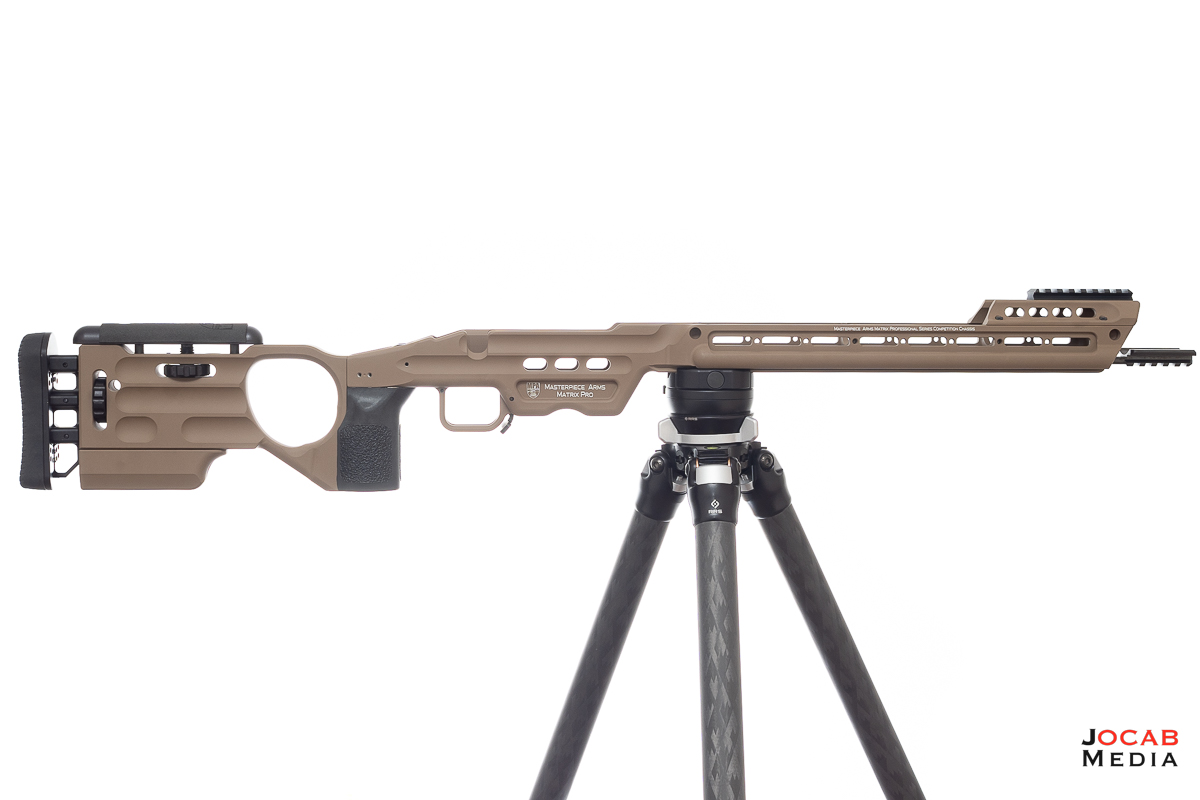
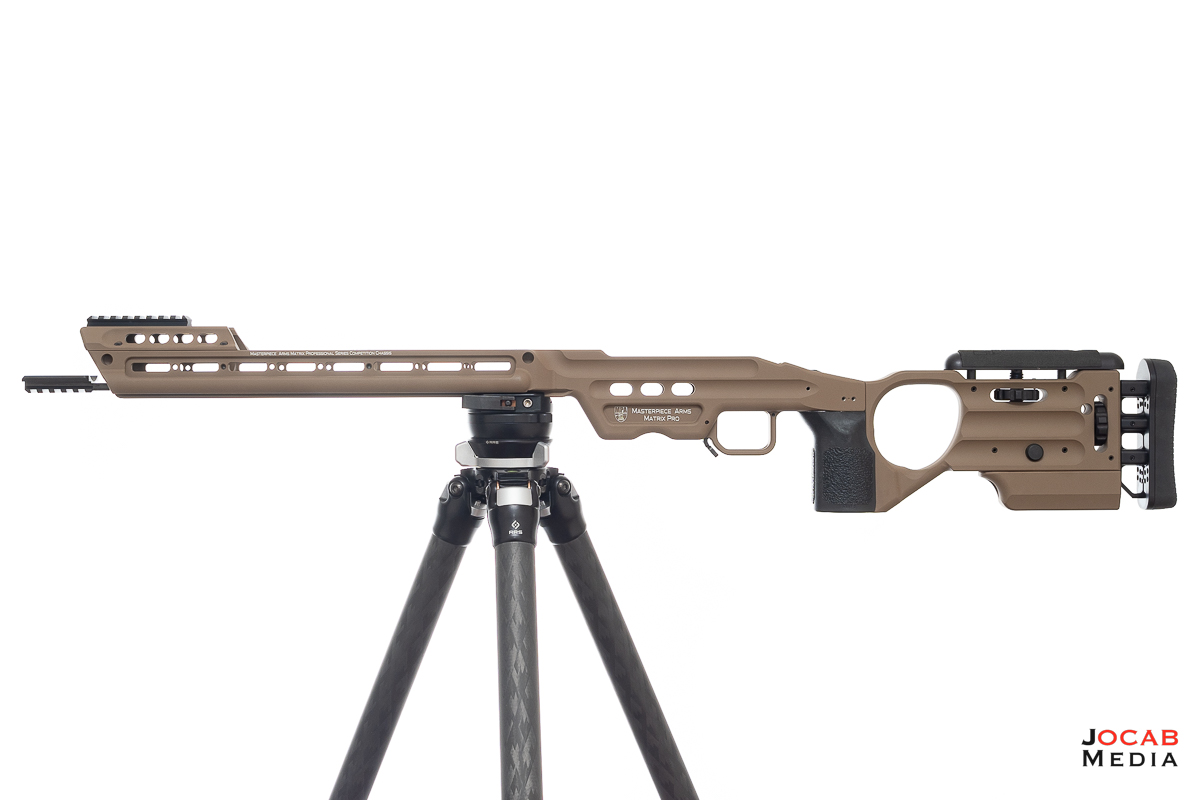
Beyond those characteristics, the Matrix Professional chassis does become its own new system.
The foreend will attract eyes immediately due to the new wider design.
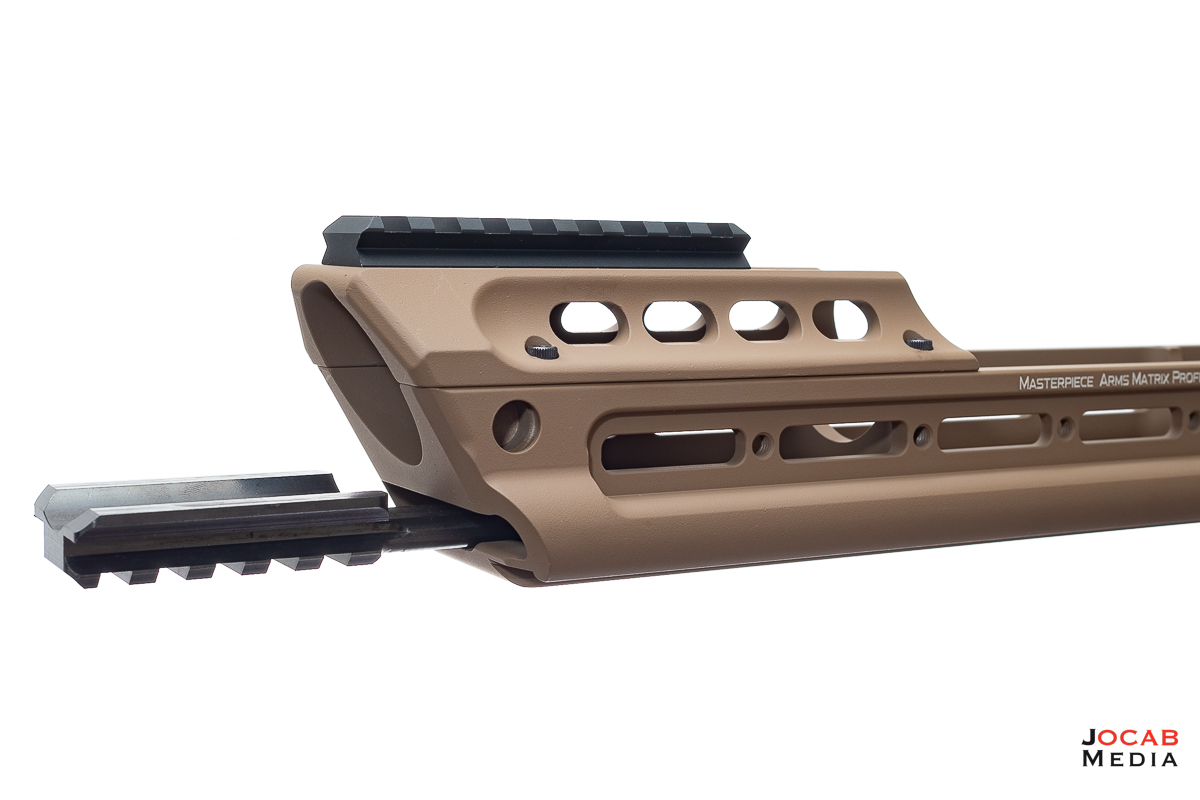
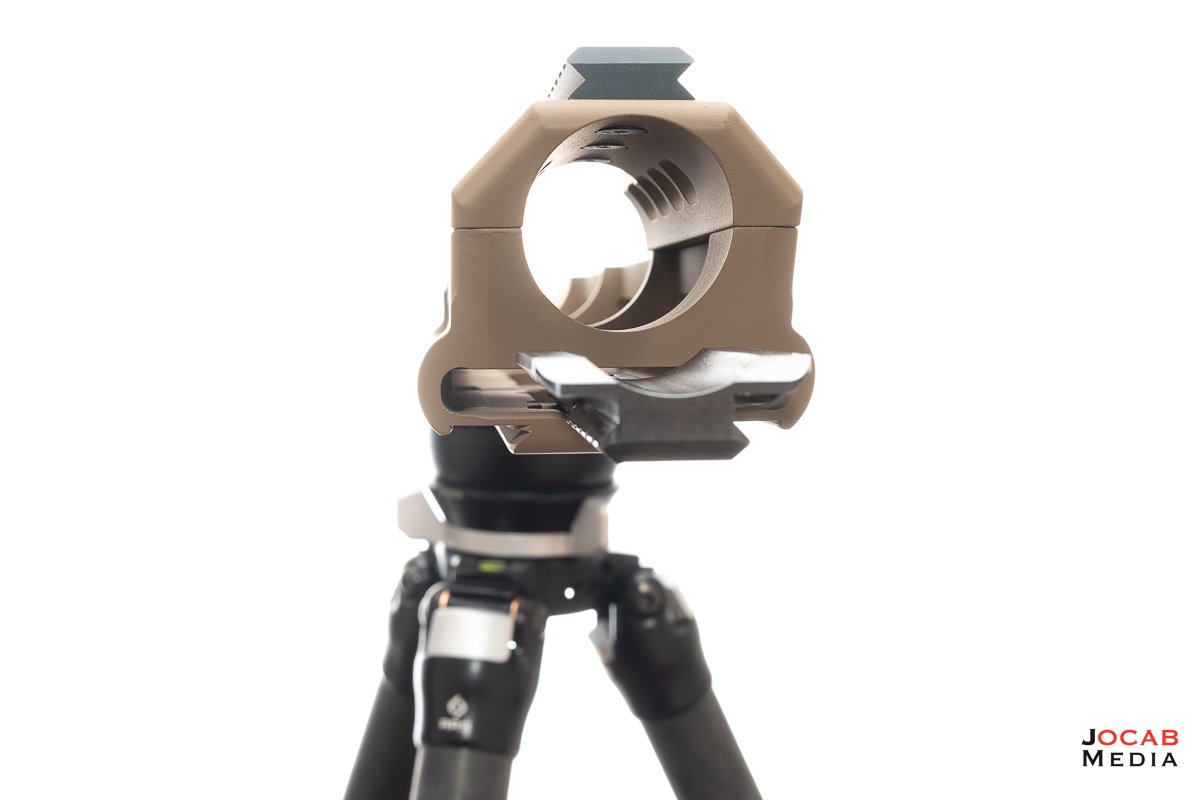
MPA released an accessory for their prior chassis systems dubbed the Competition Side Rail which were essentially aluminum slabs to fit on the side of the foreend making the foreend wider. This wider stance made for increased stability (and inherently added more weight for those seeking better balance).
Taking this concept, MPA added a bulge at the bottom of the foreend to make the foreend wider providing the wider stance that is desirable when shooting off a bag and/or barricades.
What this also facilitated is a new internal weight system that MPA created in conjunction with Gray Ops CNC.
These flat weights can be inserted and removed by sliding them through the front of the foreend without removing the barrelled action from the chassis.
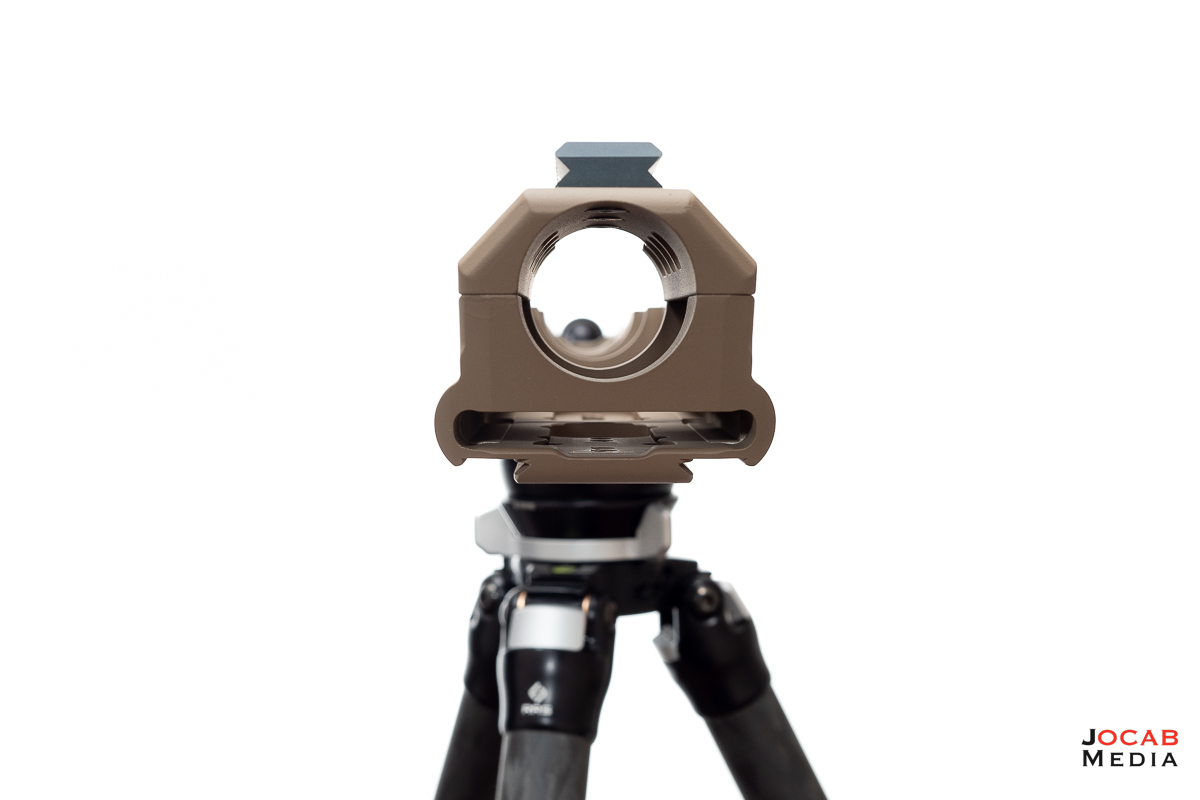
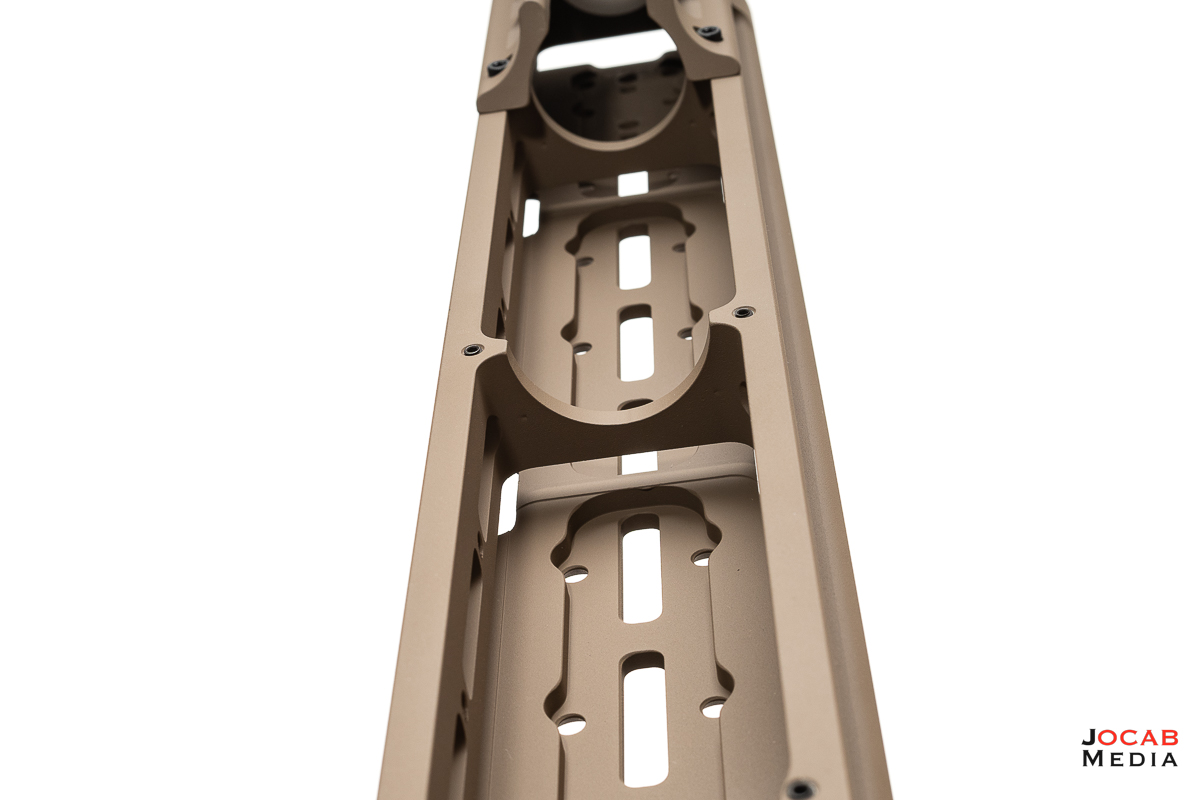
Furthermore, the MPA Matrix Professional chassis still accommodates external side weights.
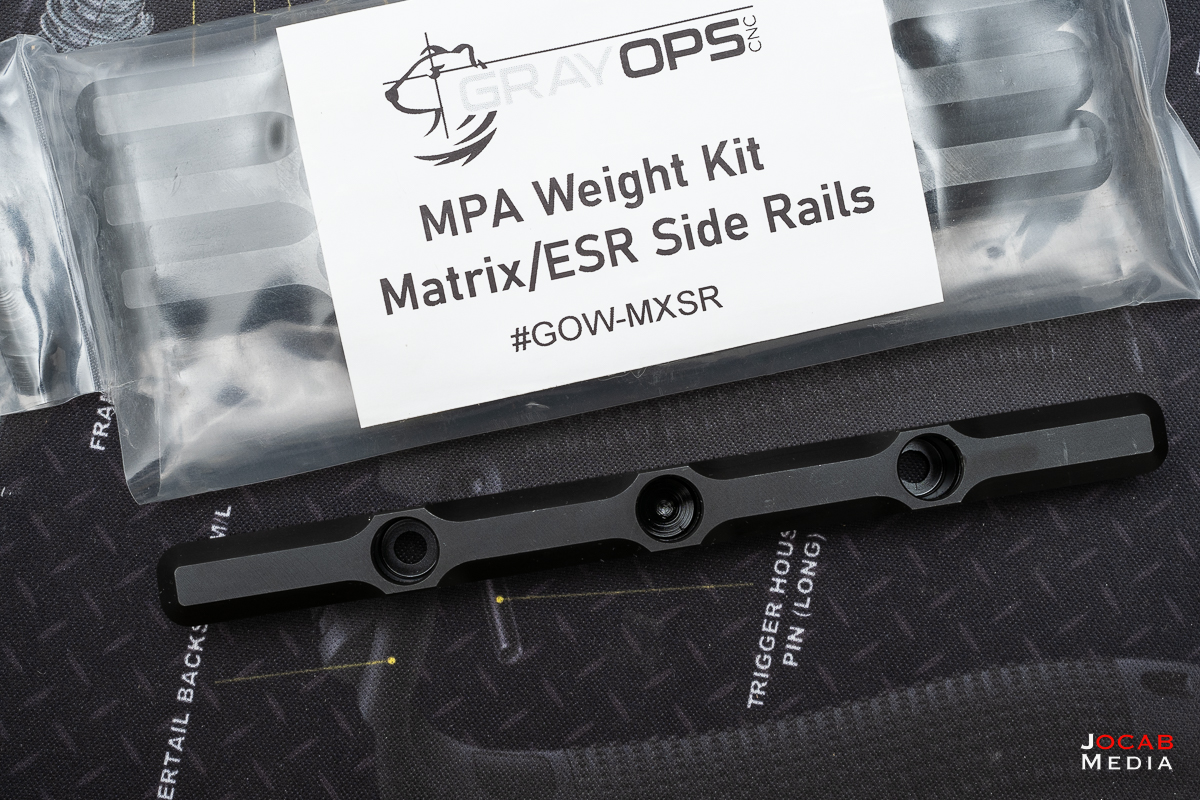
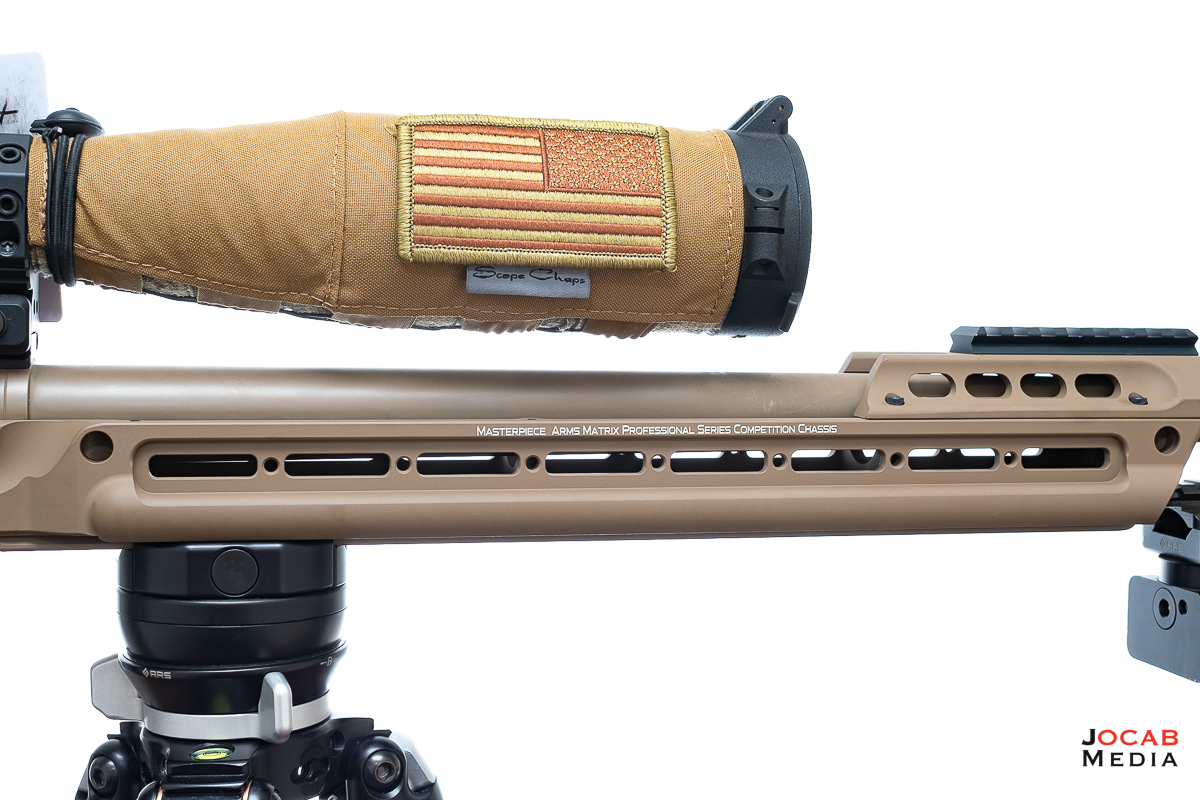
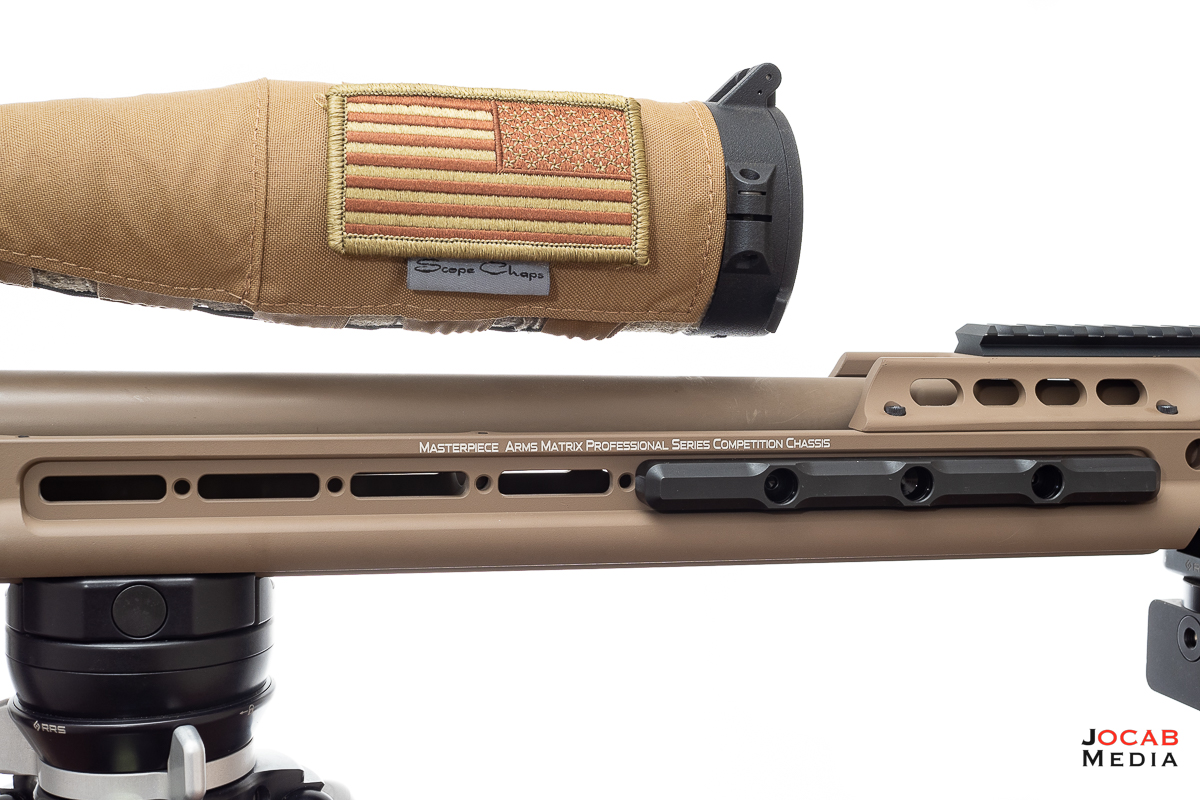
Another noticeable characteristic of the Matrix Professional Chassis is the buttstock. The buttstock assembly is a thumbhole style design that offers tool-less length-of-pull and cheek height adjustment. However, it has one more feature not seen before on an MPA chassis: An adjustable height bag rider.
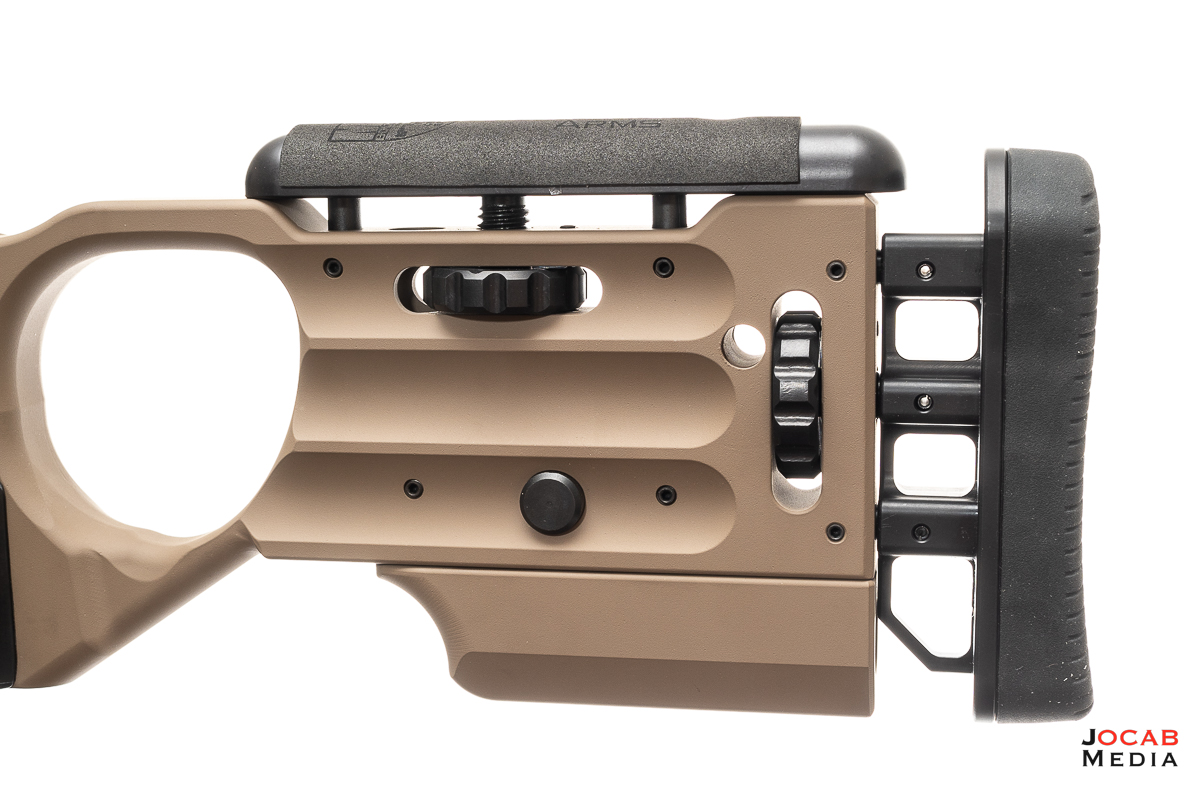
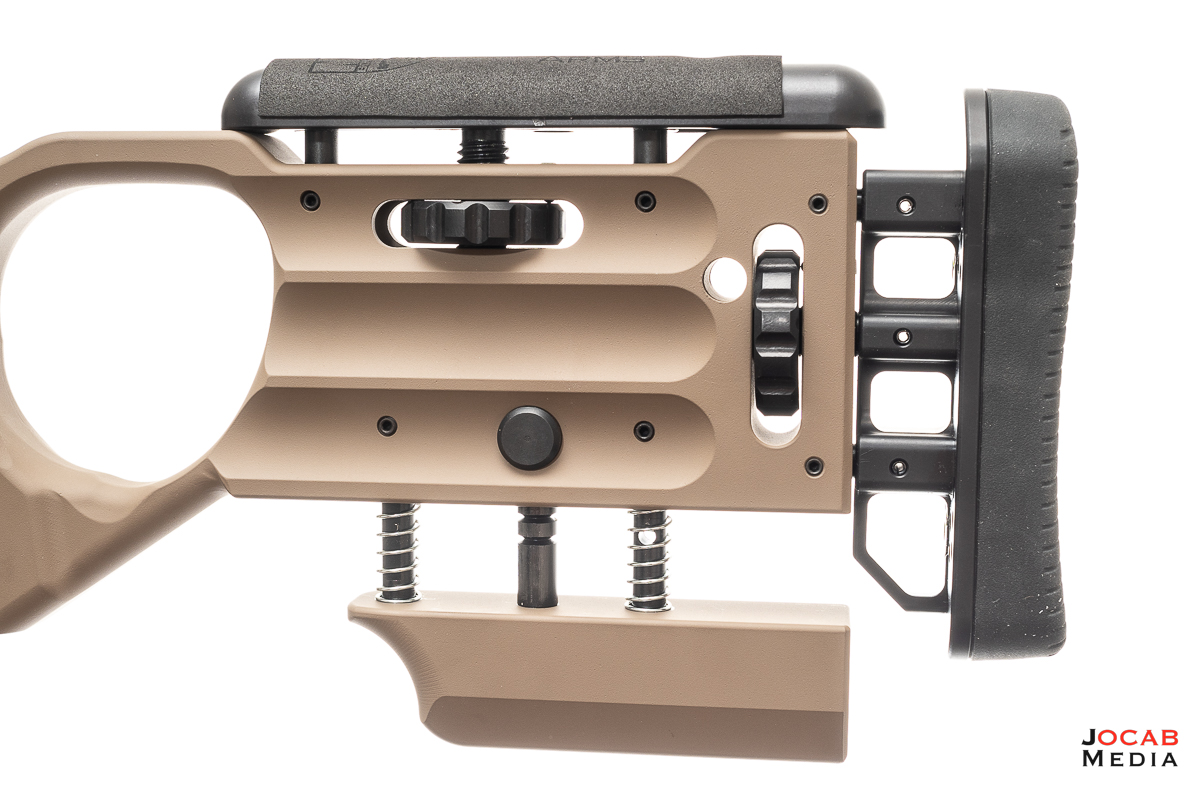
With a press of a button, the bag rider will drop down to change the height by another inch. This may not sound like much, but this can account for 120 MOA or 34 MIL of vertical adjustment. This is a nice feature to have when you find yourself in a situation where your bipod is set too tall and you need to get angle to target down under a time crunch.
Other features are the user customizable grip, thumb shelf, and trigger finger support shelf options.
I am a fan of the MPA BA Competition chassis ergonomics when it comes to my firing hand. I feel that the hand grips on the vertical grip quite well and the grip provides a nice support to keep the trigger finger at a 90-degree angle for a good straight trigger pull.
However, the MPA Matrix Professional chassis offers a way to fine-tune the ergonomics for the individual shooter.
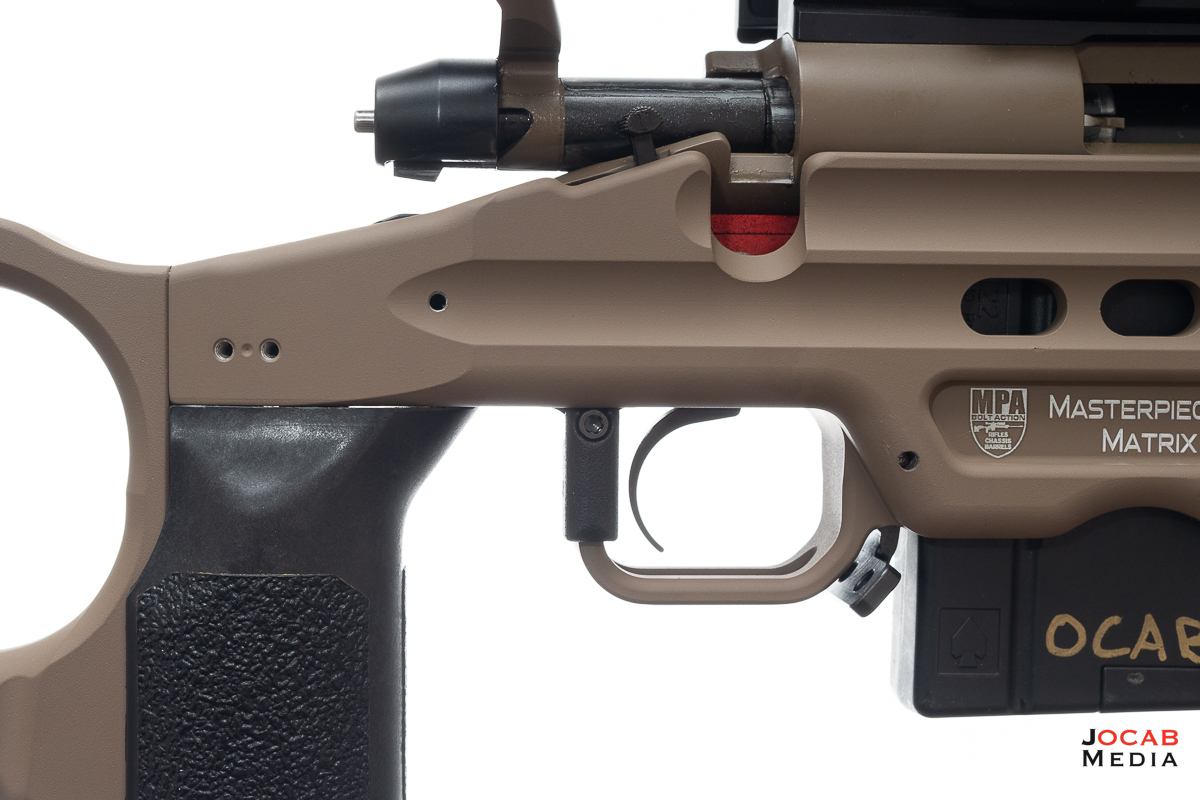
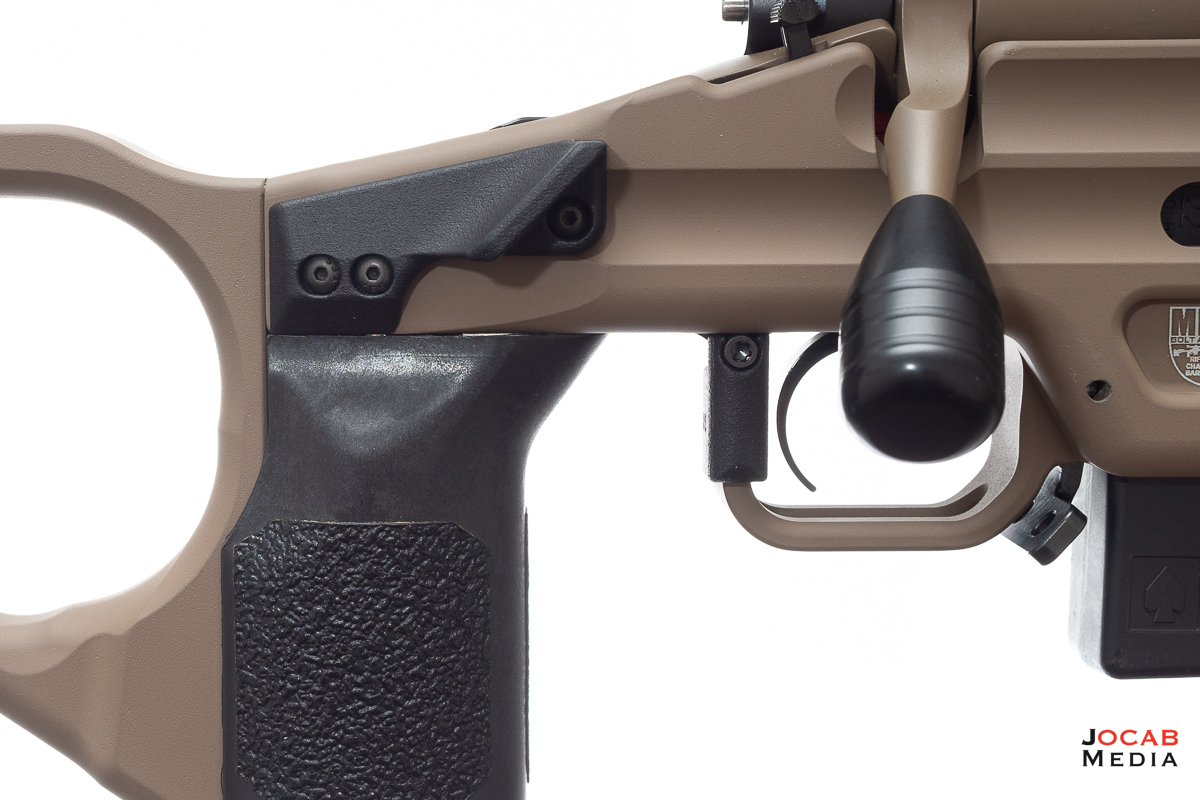
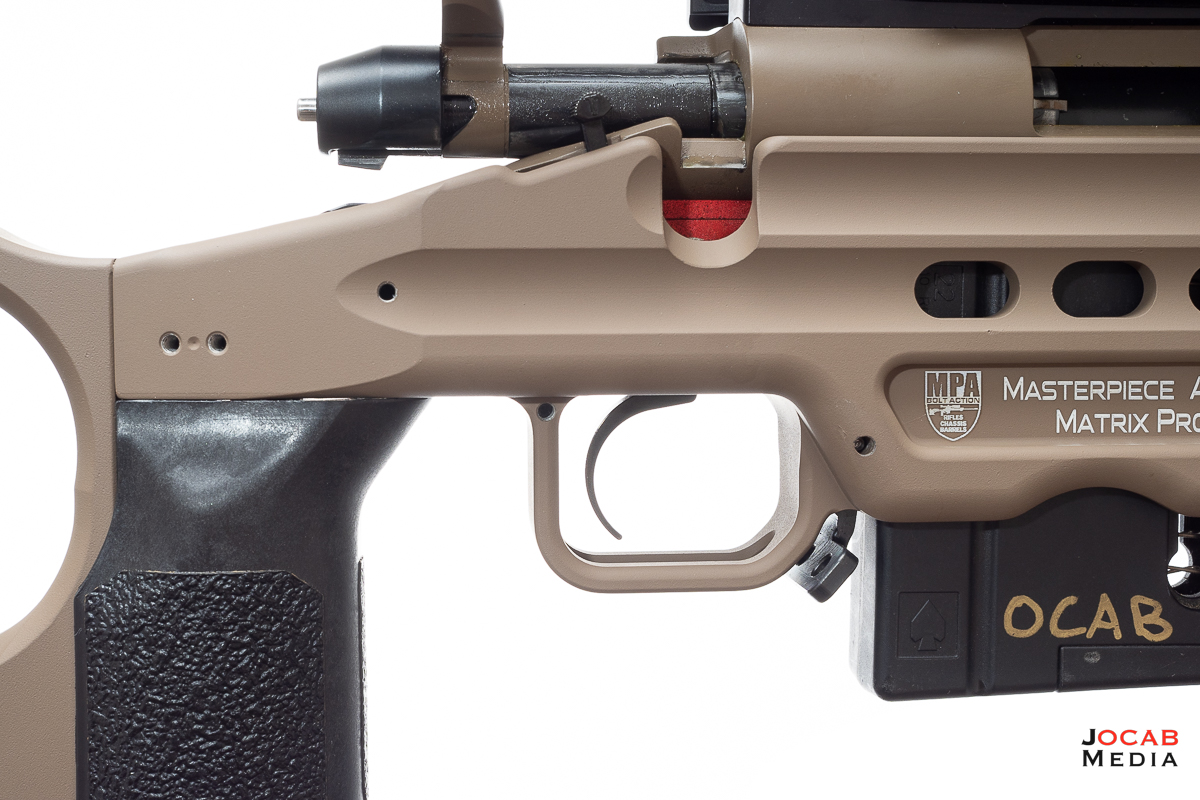
One other new feature to MPA chassis systems that is on the Matrix Professional is the ability to accept magazine well attachments such as a magazine blocker and barricade stops.
The interface for these magwell plate accessories is merely threaded holes in the chassis face front of the magazine well which allow the attachment to be secured.
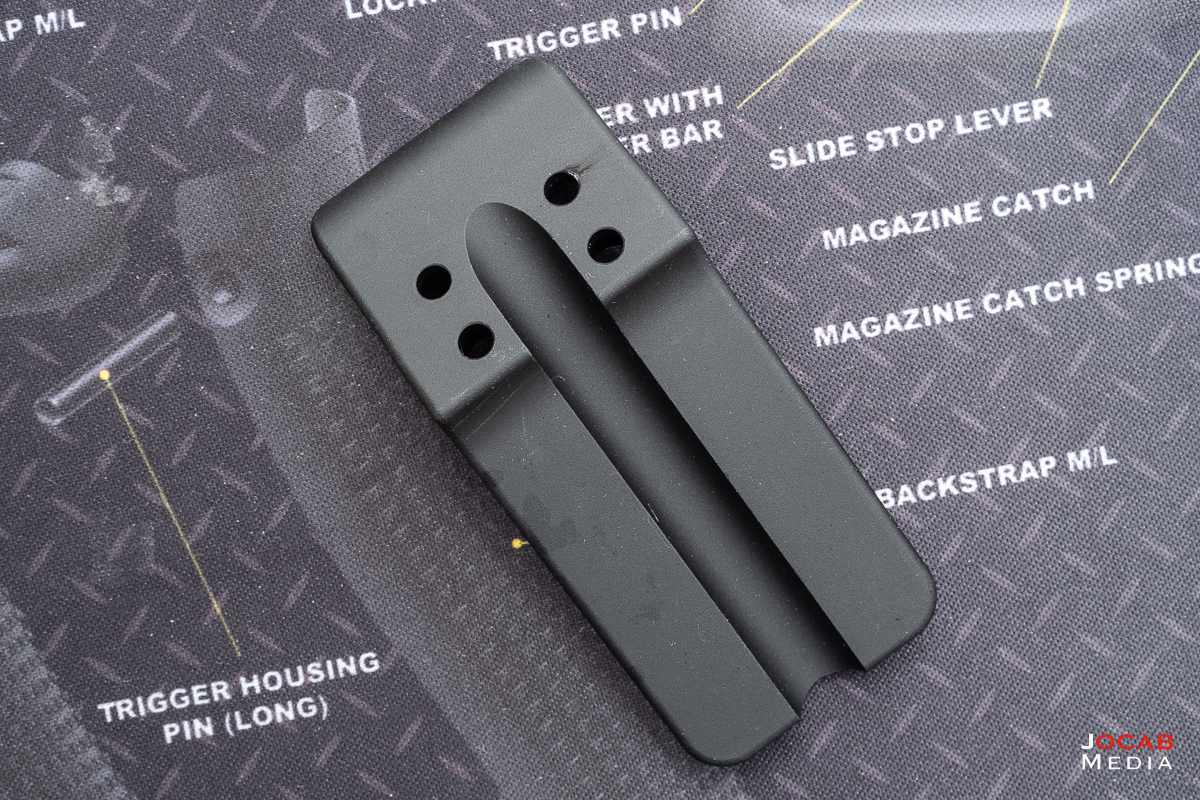
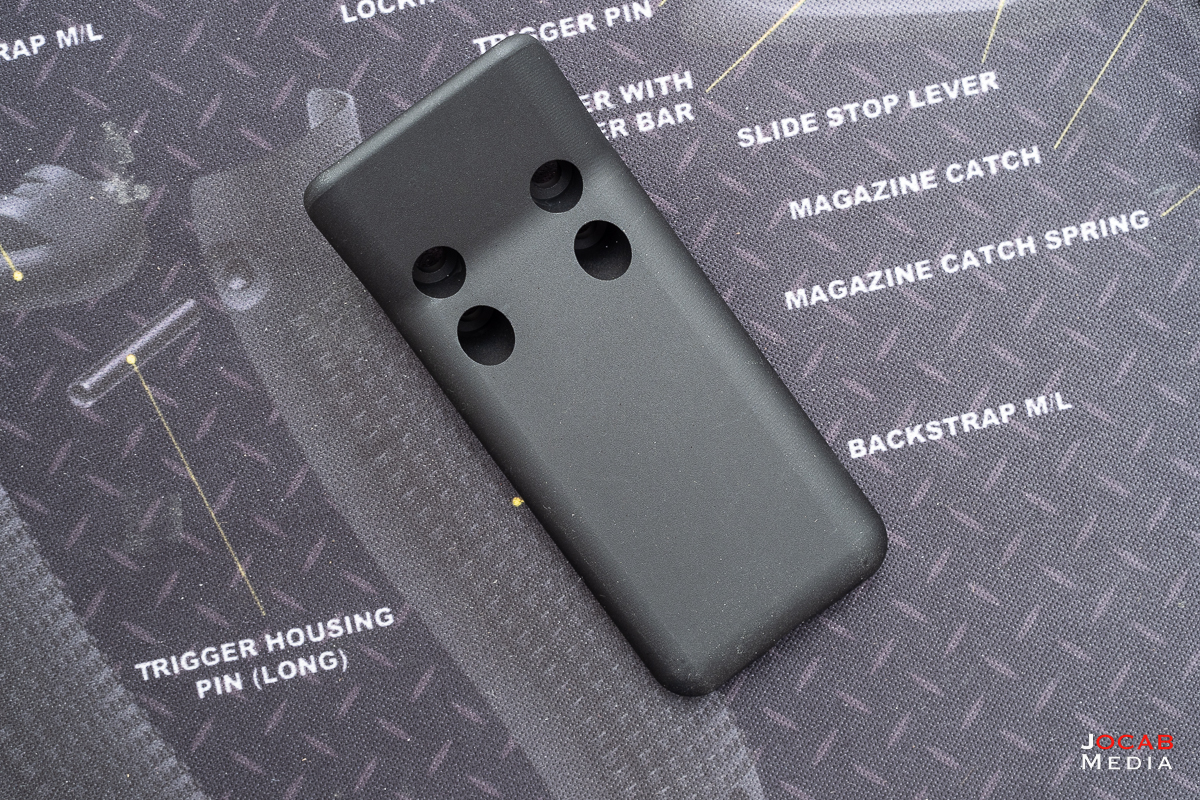
I opted to run the magazine blocker which is basically a long aluminum plate that extends vertically down and will block any bag or barricade from making contact with the magazine.
External forces pressing the magazine can adversely affect feeding of rounds into the chamber, especially with Remington 700 pattern rimfire actions. So having this feature is a nice countermeasure to such issues.
Masterpiece Arms also produced a timer mount designed for the SC Sportcount timer attach the timer to the left side of the rifle.
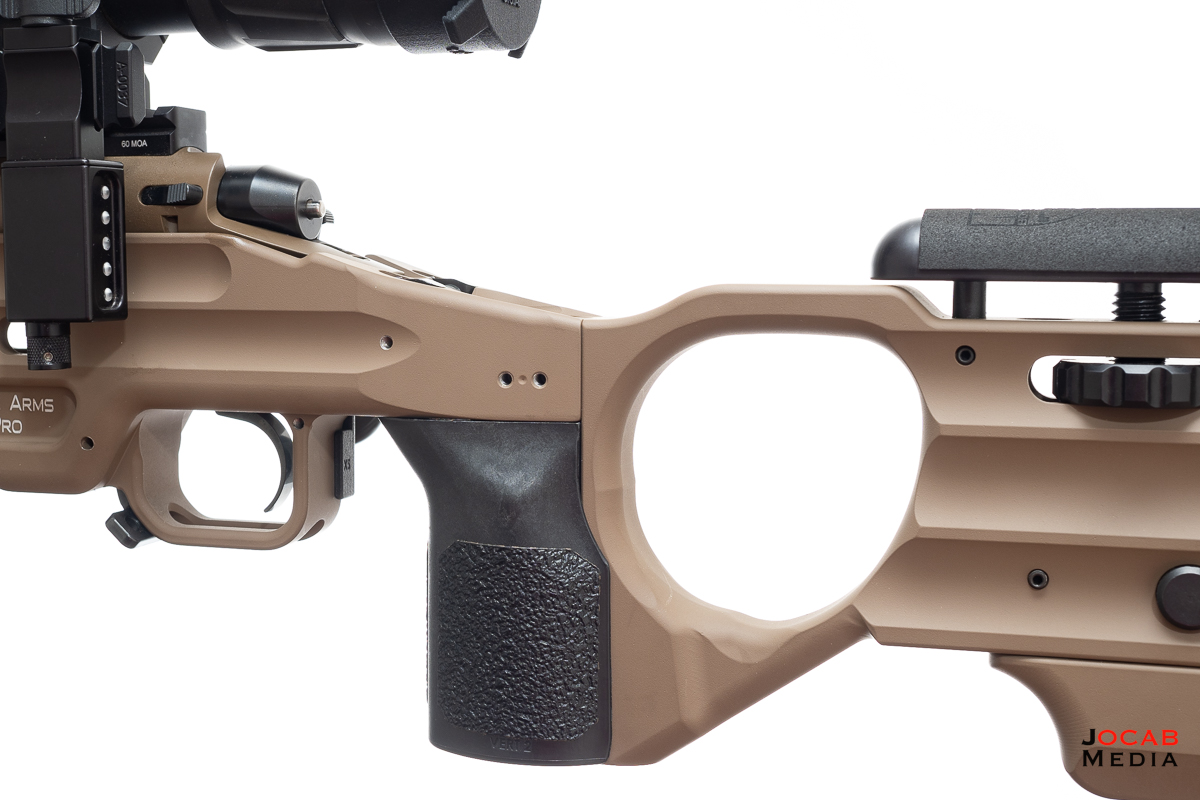
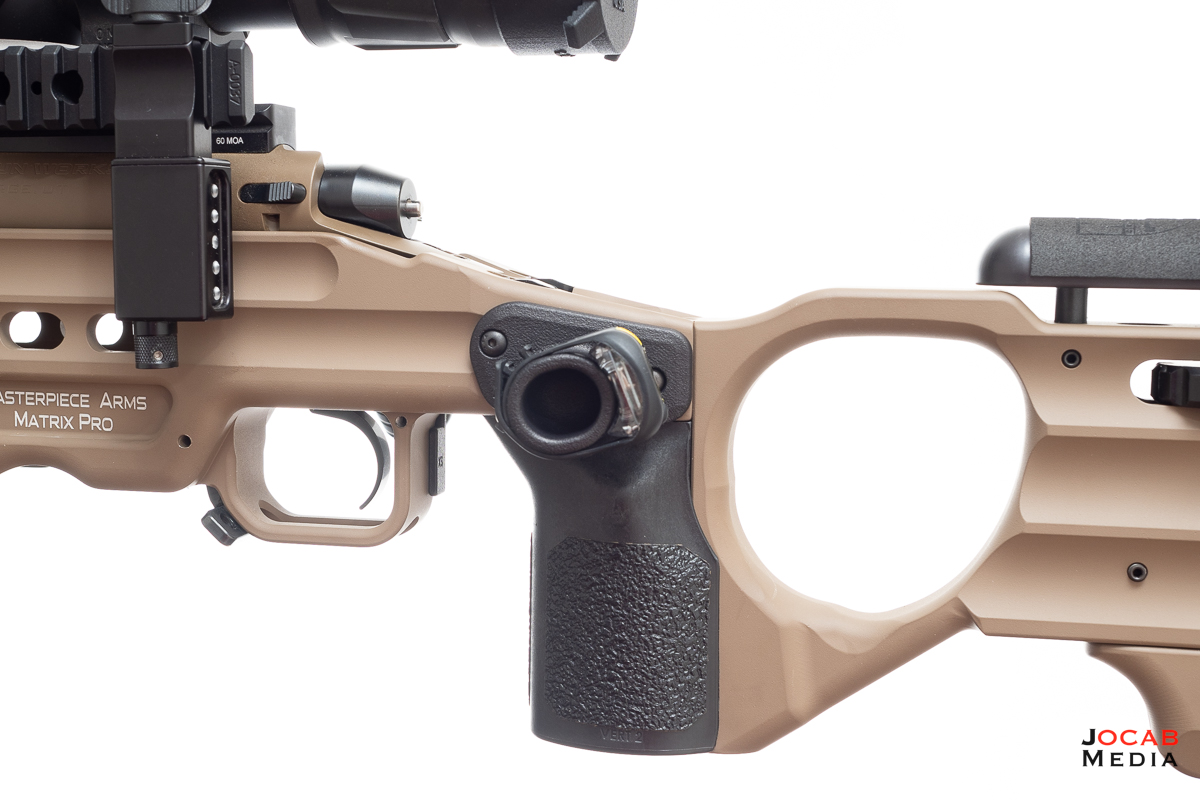
The SC Sportcount timer is available on Amazon and is a small and simple to use count up timer with a single button. I actually owned one for a couple years for casual timing of stages. I was going to come up with a simple velcro mount to a rifle, but never got around to coming up with something.
Of course, the Masterpiece Arms Matrix Professional chassis also has the other standard features that exist on the MPA BA Competition chassis including an adjustable magazine catch/lever and full length 1.5″ (aka RRS / Arca) dovetail on the foreend.
It was a easy effort to move the Vudoo Gun Works V-22 barrelled action from the BA Comp to the Matrix Pro.
I was hoping that the Matrix Professional Chassis would balance better than the BA Competition Chassis because of the different weight system, but that is not the case. My Vudoo V-22 with the 20″ MTU barrel balances nearly the same in both chassis systems with the weights I have in each respective chassis.
The rifle weighs 18.6 lbs / 20.2 lbs (with / without MDT Ckyepod Standard Gen 2) in the BA Competition chassis with the weights I used vs 20.0 lbs / 21.6 lbs (with / without MDT Ckyepod Standard Gen 2) in the Matrix Professional chassis. Thus, the rifle now weighs 1.4 lbs heavier in the Matrix Pro than in the BA Comp, with each weighted accordingly to get the balance point forward of the magazine well.
After I dropped the Vudoo V-22 into the Matrix Pro chassis, I did notice one glaring issue with the magazine lever. For some reason, the lever had very little spring tension and flopped around very easily.
When the magazine was inserted, it barely held into place on the magazine catch and any little touch of the magazine lever would drop the magazine. I removed the magazine lever as it is very simple to drift the pin out to drop the magazine lever and access the spring (same design as the BA Comp chassis). I discovered the spring seemed a bit warped and was actually shorter at rest (uncompressed) than the spring from an MPA BA Competition chassis (pulled from my spare parts bin).
I emailed Masterpiece Arms about this and they said the feel might be different because the spring hole in the chassis is deeper the the Matrix Pro compared to the BA Comp. However, MPA provided me a link to the spring they used and the spring specification on the product page was longer than what was pulled out of my Matrix Pro and slightly longer than the spare BA Comp magazine lever spring I had.
I put the spare spring for my BA Comp lever into the Matrix Professional and went to the range to try things out.
The rifle ran fine however I found that the magazine was still loose in the chassis and actually moved when the bolt was being operated (and stripping a round from the magazine to feed into the chamber).
With this in mind, I ordered longer springs of different metal types from the supplier (Lee Spring) that MPA sources the springs from.
I ended up using the 0.563″ long (uncompressed) spring that I acquired from the spring supplier and it was a tremendous improvement to the magazine lever behavior.
The magazine locks into place perfectly and the magazine lever has a good amount of tension to it.
It is important to mention that the supplier of the springs uses three different types of metal for the spring: music wire (carbon steel), Stainless Steel, and 316 Stainless Steel. I used 316 SS assuming it would be better because 316SS won’t rust. However, I was not paying attention to the fact that the spring rate is actually lower with 316 SS compared to SS or carbon steel of the same spring dimensions and length. If I need even more tension on the magazine lever, I can switch to another 0.563″ spring but made out of carbon steel.
Since the swap from the MPA BA Comp to the Matrix Professional chassis, I have run the new Vudoo V-22 configuration at the range in various shooting sessions as well as in three NRL22 matches.
If anyone encounters the same issue with their Matrix Professional magazine catch / lever, the spring to try is the Lee Spring part number LC 038C 05 M. However, keep in mind that it is possible future iterations of the Matrix Professional may be modified so the required spring specification may change. Also, one caveat with Lee Spring is they are expensive if you only buy a small number of springs. It appears they are a supplier to manufacturers and cost per spring decreases as quantity of springs ordered increases.
After this amount of time and use, what are my feelings towards the Masterpiece Arms Matrix Professional chassis?
I will say that there are a lot of features I like about the Matrix Pro.
The wide foreend definitely makes for a more stable rifle when resting it on a bag like the Armageddon Gear / Reasor Precision Game Changer. It is less likely to roll to one side.
The MPA magwell plate system is a nice value add and I will keep the mag blocker installed as it provides a nice barricade stop and insurance for any magazine issues if forces are exerted on it while shooting of any barricade or bag.
I have also found the adjustable height bag rider to be surprisingly useful. At my primary shooting facility on the rimfire range, the target area beyond 52 yards immediately hits a 4 degree angle (from 0 degrees at 52 yards and closer). When we have to engage targets that are under 50 and over 50 yards, there is constant changing in angles to target, forcing the shooter to run the bipod legs longer/taller. This then means the shooter is often manipulating the rear bag (if shooting prone) by changing the orientation of the bag, squeezing the bag, flattening the bag, etc., in order to get the rifle to rest level or to angle the the rifle upwards.
In this type of scenario, the adjustable height bag rider makes it more convenient to maximize the rear rest stability while engaging targets at varying angles of elevation. I can set my bipod legs tall and keep the bag rider retracted so I can engage the targets at an angle, then press the button to release the bag rider making it lower allowing me to engage the ground-level targets with less bag manipulation.
The weight system does have a great amount of flexibility and I appreciate how the internal foreend weights can be removed/installed without removing the action.
The user selectable thumb shelf and trigger finger supports are also great features available in this chassis.
While there are plenty of things to like, there are a few negatives.
First off, the amount of slop in the magazine lever was the first negative. Fortunately, I was able to address this with a spring swap. However, I feel like this should not be an issue out of the box and I am surprised that I have not seen more complaints online regarding the magazine lever.
Note: Someone else reached out to me on social media asking where I acquired the replacement springs as they also have a similar ‘sloppy’ magazine catch / release lever on their MPA Matrix Professional, which indicates my experience is not an isolated incident.
The balance that I was looking for still has not been answered by the Matrix Pro chassis. Granted, I feel that my quest for the perfect balance is simply a lot to ask for considering the rifle in question which has a 20″ MTU barrel. If this had a 24″ or even a 26″ barrel, I feel like I would not have as much trouble trying to get the balance point where I want it.
Another issue I found with the Masterpiece Arms Matrix Pro is that the cheek riser blocks a bore guide and the cleaning rod. The difference between the Matrix Pro and the BA Comp in this regard is that the Matrix Pro comes with what MPA dubs their low profile cheek riser plate.
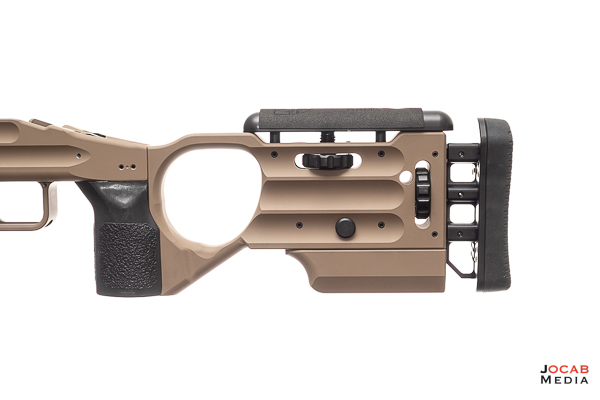
Unlike the standard plate that comes (or used to come) with the BA Comp, the low profile cheek riser plate does not drop down below flush.
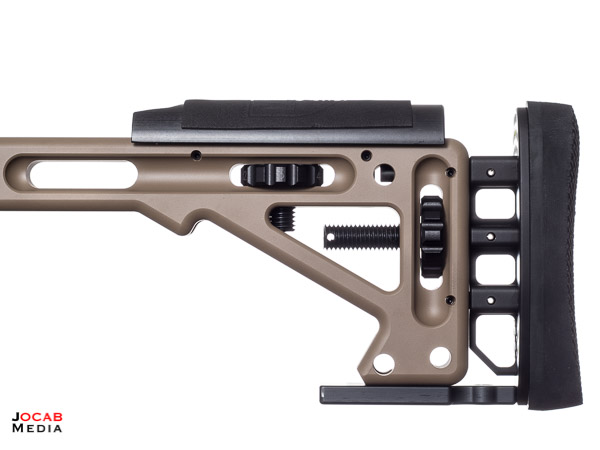
Thus, the cheek riser plate on the MPA Matrix Professional chassis prevents a bore guide from being inserted into the action. Even without a bore guide, running a cleaning rod would require a longer rod (so the handle doesn’t contact the cheek riser) and it would still result in flexing or bending the rod while coming in from an upward angle.
A folding variant will mitigate this issue as you can simply fold the stock to get access to the back of the action. However, given I opted for a fixed stock as I usually do, I am left with removing the cheek riser. Unfortunately, removing the cheek riser on an MPA buttstock is not something you want to do regularly as the threaded rod for the riser is what keeps the thumb wheel adjuster in place. If you take the thumb wheel out, you will likely loose a ball bearing and spring which is used as a step indicator for detents in the wheel.
I ended up ordering and aqcuiring the MPA quick release conversion kit that will allow the cheek riser to be pulled off the buttstock. It is essentially a way to remove the cheek riser while keep the threaded rod in place.
Frankly, I think the quick release cheek riser should be standard on an MPA Matrix Professional chassis as cleaning a rifle barrel will be quite the task (without a folding stock).
I usually talk about price at the end of reviews, but I feel that I will mention it now because I would consider it a con or negative aspect of the Matrix Pro. At the time I am writing this, the MPA Matrix Professional chassis is $1550 USD MSRP. For comparison, the non-folding BA Competition chassis for a short action is $1075 USD MSRP and can often be found for under $1000 at authorized retailers. This is basically a 44% price increase of a BA Comp chassis.
With all of these pros and cons discussed, would I recommend the Masterpiece Arms Matrix Professional chassis?
Yes, I have no problem recommending the Matrix Professional chassis to anyone looking for a versatile and adaptive chassis system. The Matrix Pro offers a lot of great features and functionality that should meet most people’s needs.
However, if you already have an MPA BA Competition chassis like I do and are simply looking to switch to the Matrix Professional chassis, I feel that it probably is not worth the money, especially if the BA Comp is already working for you.
If you are starting off from scratch and building a new rifle system, would I recommend the BA Competition or the Matrix Professional? Is the $475 price premium of the Matrix Pro over the BA Comp justified by the features of the Matrix Pro? I honestly feel this is a difficult quandary. I have been able to acquire both of my BA Competition chassis systems for $1000 and given the price and the capabilities of the chassis, I feel the BA Comp is a solid buy.
Furthermore, I do not think that the Matrix Professional chassis has directly improved my shooting versus the BA Competition chassis in terms of hits on steel. When it comes down to it, my final score in a match would likely be the same with either the Matrix Pro or BA Comp.
However, I think the Matrix Professional is more comfortable to shoot in terms of giving me more adjustments in ergonomics and added stability (wider foreend).
Some will ask if I recommend the MPA Matrix Professional chassis over other chassis systems from competing manufacturers such as the MDT ACC or the KRG Whiskey-3. This is something I cannot answer and a recommendation between manufacturers will be very opinionated and biased. In the grand scheme of things, the stock and chassis manufacturers you see on rifles used in NRL and PRS events are going to be solid choices. There are simply too many factors and minute details in every stock or chassis.
I feel that when it comes down to it, a person will make a selection by eliminating those options that are deal-breakers for their individual use-cases (e.g., those not available in left-hand variant, those without adjustable LOP, those without a good weight system, etc.).
I would like to mention before closing out this review that chassis systems are getting quite expensive compared to a few years ago. While inflation has definitely impacted prices, manufacturers are continuing to add more features and make design changes that increase manufacturing complexity. Just a few years ago, it was not difficult to obtain a chassis at a sub-$1000 price point.
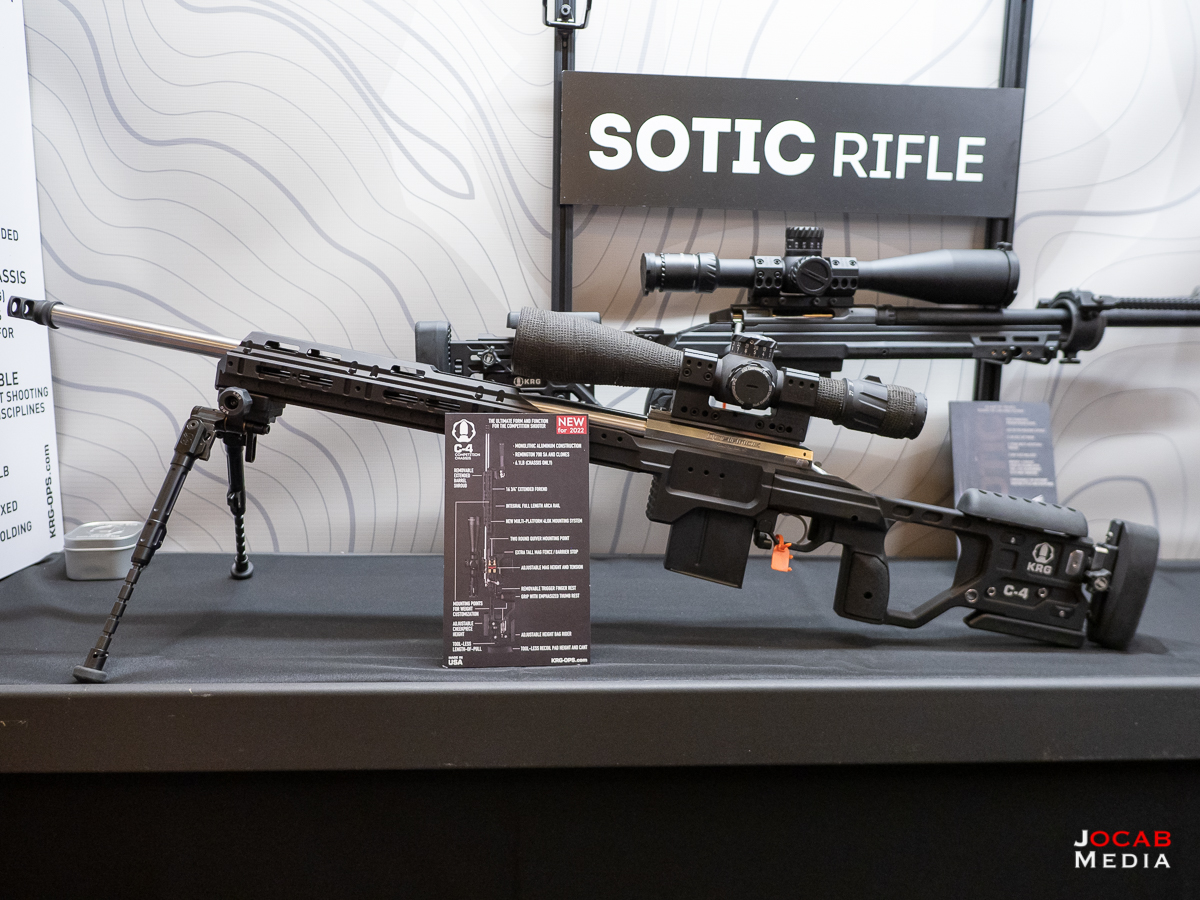
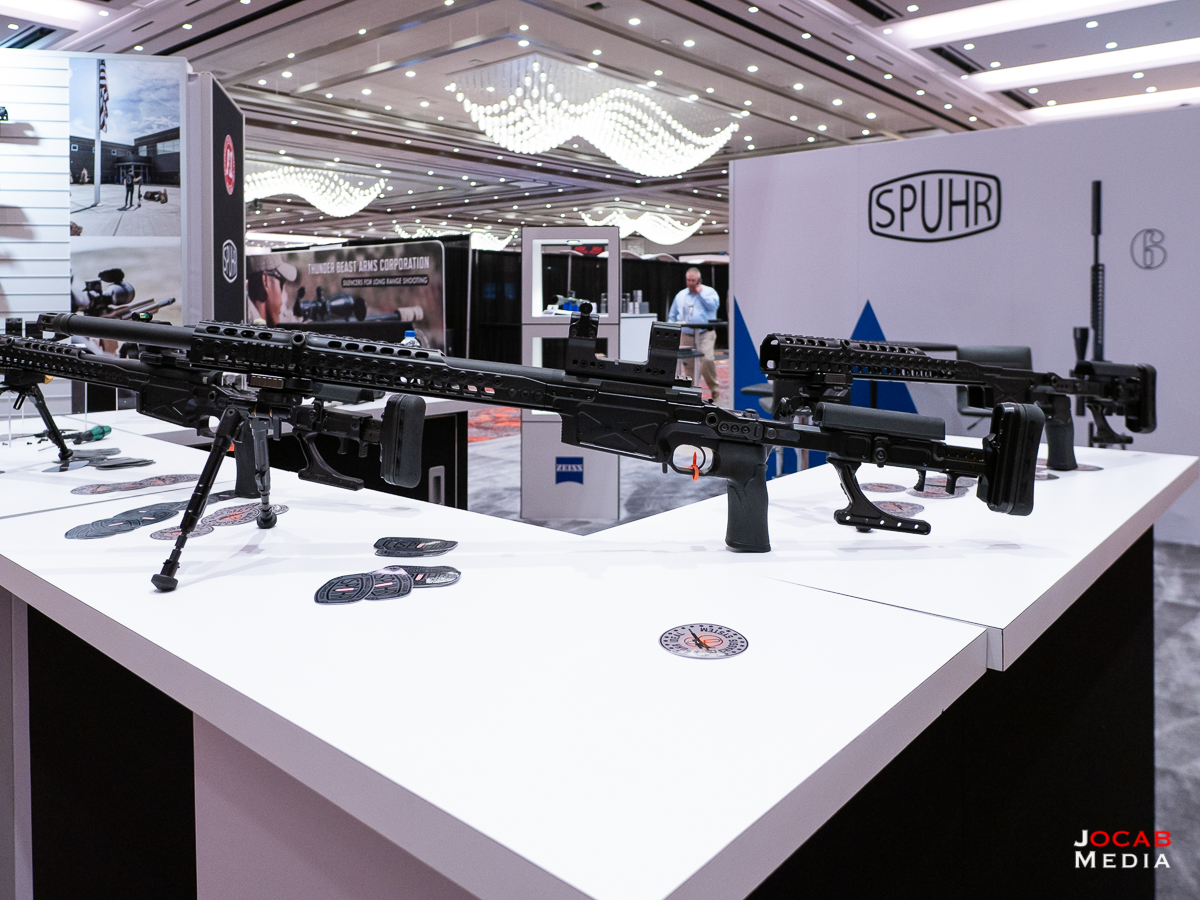
Fast-forward to today and chassis systems are well into the $1500 range and we are now seeing $2000 USD within reach for a chassis system’s total cost. This trend is definitely an issue to be cognizant of.

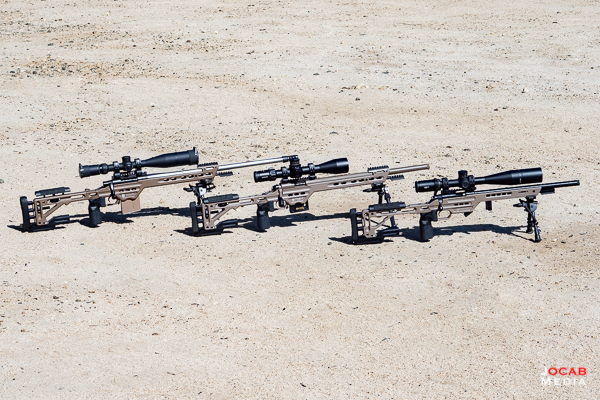
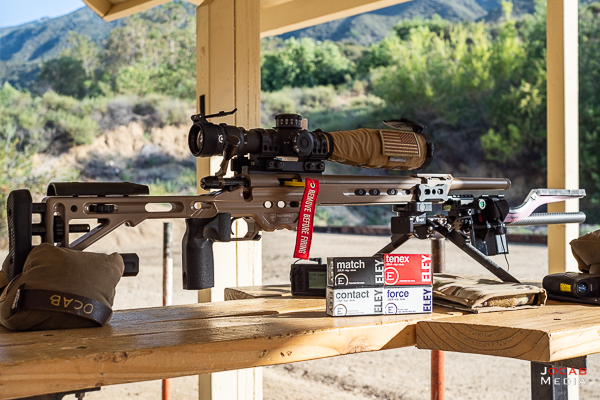
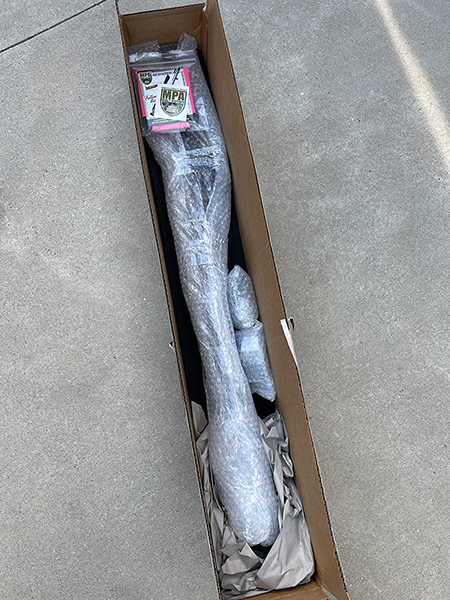
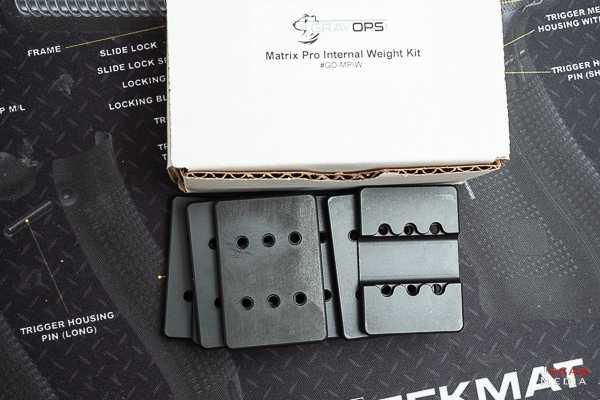
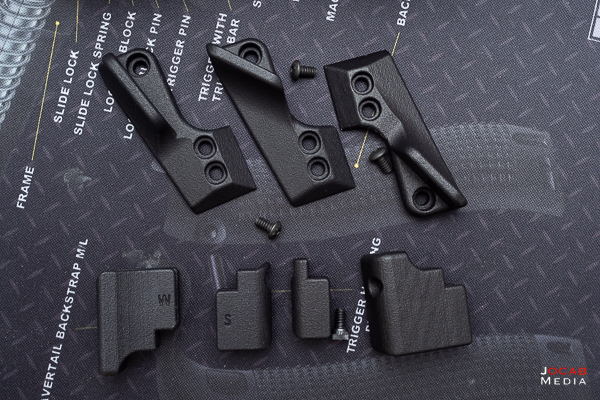
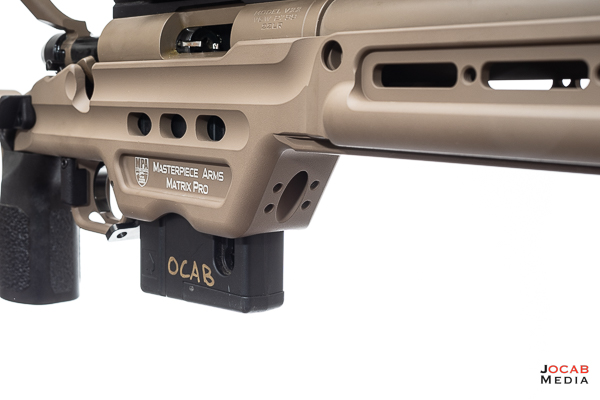
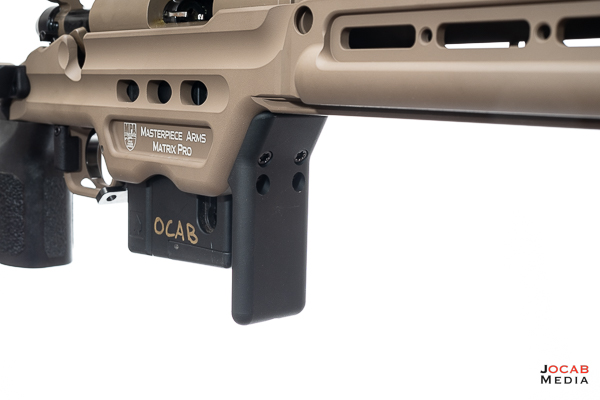
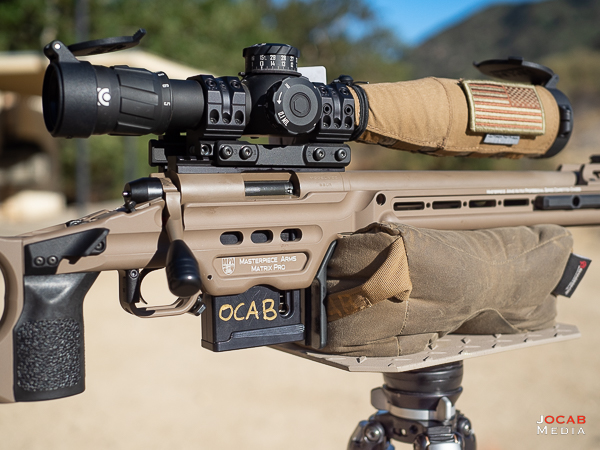
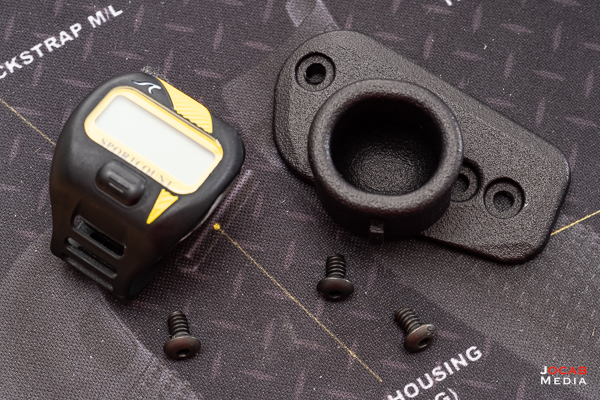
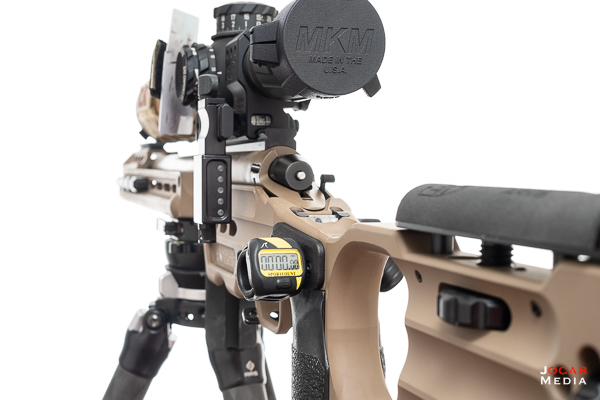
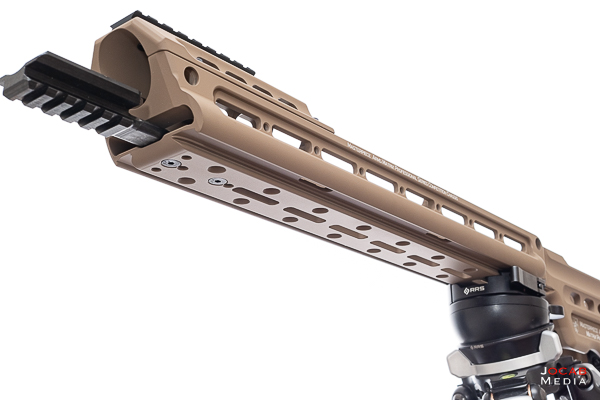
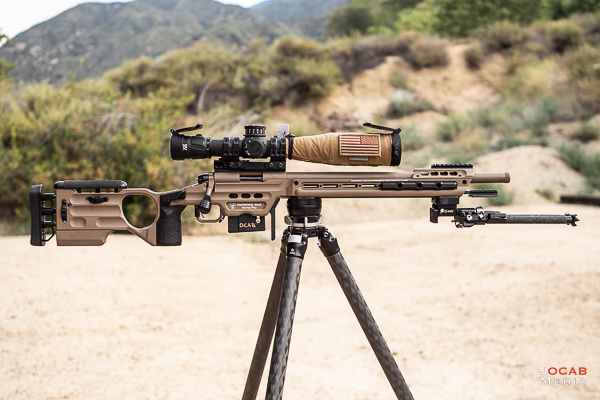
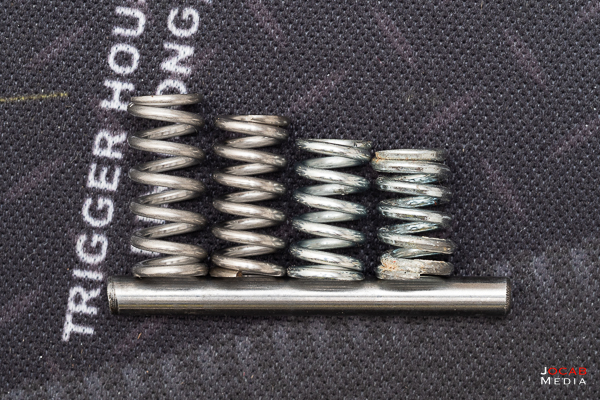
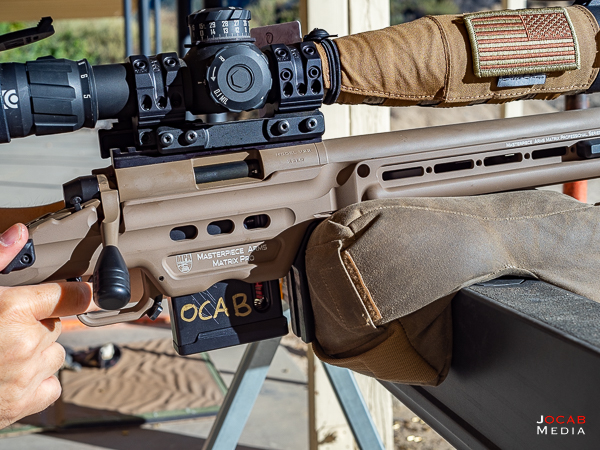
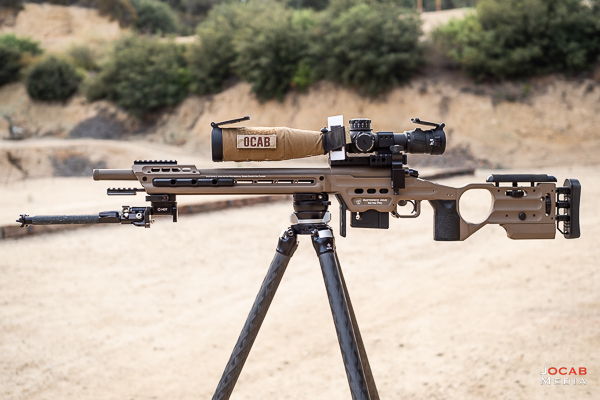
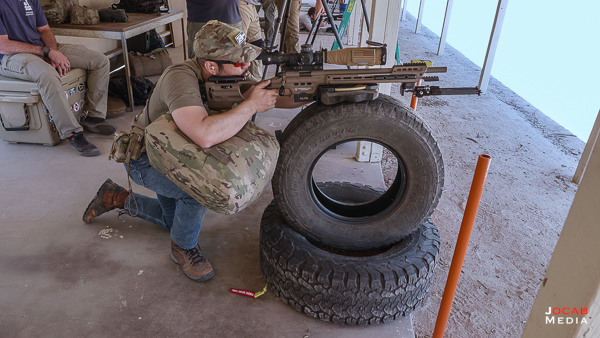
Don C
Thanks for the comprehensive review. I am happy with my 2 standard MPA chassis and I hope MPA fixes the deficiencies you note in your review. I won’t wait up to 22 weeks for a chassis especially after your neutral review.